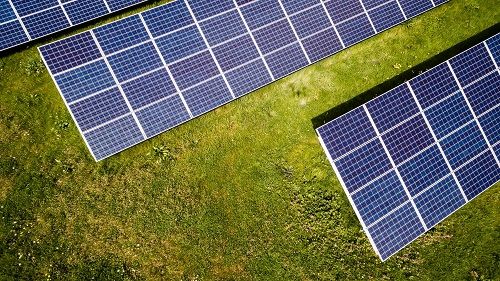The expansion of solar energy production is progressing rapidly, while at the same time politicians have set themselves ambitious goals. Ground-mounted systems are set to play a key role, particularly systems on agricultural land. "We have developed special expertise in agrivoltaics in particular," says Markus W. Voigt, CEO of the aream Group.
The sun is the energy source of the future. In the planned expansion of solar energy in Germany, particular attention is being paid to open spaces: car parks, industrial plants and agricultural land. At the end of 2023, they accounted for around a third of all installations. According to the EEG, half of the future expansion is to take place on open spaces, with an additional capacity of almost ten GW being targeted from 2025. Agri-PV, i.e. the installation of solar systems on agricultural land, could become a core technology. It is still in its infancy in Germany. However, its advantages are undeniable.
Agri-PV allows the multiple utilisation of land, increasing the efficiency of its use and thus reducing competition for scarce sites. According to the Ministry of Agriculture, electricity generation with agri-PV requires a maximum of 15 per cent of agricultural land, meaning that at least 85 per cent of the land remains available for agriculture. In addition, horizontal agri-PV systems can protect the soil from the sun and drying out, while vertical systems can protect it from wind erosion. In addition, there are further advantages such as the integration of PV systems into the landscape, farmers can diversify their income and value creation in rural areas is increased. "All of this ensures a high level of acceptance of agrivoltaics among farmers and the population," says Voigt.
However, the development of the corresponding areas is a complex challenge for project developers. Firstly, suitable locations must be found in a targeted manner using AI-based geoinformation systems. Integrated feasibility analyses for ground-mounted systems and agri-PV are created in a preliminary assessment. Acquirers are then sent out to secure the sites and initiate projects. "We believe we are well positioned in this process," explains Voigt, "because aream covers the entire value chain, from securing land to the ongoing operation of the plants." By the end of 2025, aream intends to develop more than 500 MWp of solar plants to construction maturity. In addition, the pipeline includes a potential of three GWp of solar and four GW of storage.
PRESSEKONTAKT:
Leandra Kiebach
T: +49 (0)211 30 20 60 4-2
E: lk@aream.de
